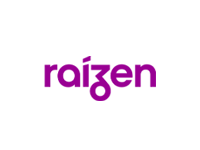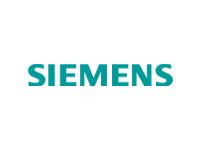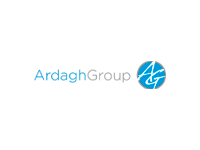Nowadays, while it has become more challenging to internally manage all the risks that contractors may bring, this management has also become increasingly important. A robust Contractor Risk Management system ensures that the contractors you engage meet the necessary standards for safety, compliance, and performance. However, not all organizations are at the same level of maturity when it comes to managing contractor risks. Understanding and assessing your CRM maturity level is key to enhancing your risk management practices and achieving operational excellence. What is Contractor Risk Management Maturity? Contractor risk management maturity level refers to the level of development an organization has achieved in its ability to effectively manage risks associated with contractors. It measures how integrated, proactive, and well-structured the company's processes are. The levels range from Basic, where processes are entirely reactive (I wait for a problem to arise and then solve it), to Advanced (where all control actions are aligned with the company's strategy). The five levels of Contractor Risk Management Maturity Organizations typically progress through five levels of maturity in their Contractor Management journey: ➡️ First steps (reactive) At this level, Contractor Risk Management processes are largely reactive. There are minimal formal policies in place, and risk management activities are often triggered by incidents or regulatory pressure. Contractors are selected based on availability rather than strategic fit, and risk assessment is superficial. ➡️ Developing (emerging practices) Organizations begin to recognize the importance of contractor risk management. Basic policies and procedures are established, but they are not yet standardized across the organization. Contractor selection criteria are introduced, and some efforts are made to monitor contractor compliance and performance. However, these practices are still inconsistent and lack integration with broader risk management processes. ➡️ Defined (established processes) At the defined level, Contractor management processes are formalized and documented. Organizations implement standardized procedures for contractor selection, risk assessment, and performance monitoring. There is a greater focus on compliance, and regular audits and inspections are conducted. While these practices are systematic, they are often siloed, with limited collaboration between departments. ➡️ Managed (integrated and proactive) Contractor risk management becomes integrated into the organization’s overall risk management framework. Processes are proactive, with regular risk assessments, continuous monitoring, and real-time data collection on contractor performance. Communication and collaboration between departments are strong, and CRM practices are aligned with the organization’s strategic objectives. The organization actively engages contractors in safety programs and works closely with them to mitigate risks. ➡️ Optimized (continuous improvement and innovation) At the optimized level, CRM is a core component of the organization’s culture. Processes are continuously reviewed and improved based on data analytics, industry trends, and feedback from stakeholders. The organization not only manages risks but also innovates to anticipate and prevent potential issues. Contractor relationships are strategic, with long-term partnerships focused on mutual growth and risk reduction. The organization is recognized as a leader in contractor risk management, setting benchmarks for the industry. Why maturity matters Understanding your organization’s CRM maturity level is essential for several reasons: Risk Mitigation: Higher maturity levels lead to more effective risk mitigation strategies, reducing the likelihood of incidents, legal issues, and financial losses. Operational Efficiency: As Contractor management processes become more integrated and proactive, operational efficiency improves, leading to better project outcomes and cost savings. Regulatory Compliance: Mature Contractor risk management systems ensure consistent compliance with regulatory requirements, reducing the risk of fines and legal penalties. Reputation and Trust: Organizations with advanced Contractor management maturity levels are viewed as reliable and responsible partners, enhancing their reputation and fostering trust with clients, regulators, and the public. How to advance your Contractor Management Maturity Level To progress through the maturity levels, organizations should focus on the following strategies: Assessment and Benchmarking: Regularly assess your current Contractor risk management practices and benchmark them against industry standards. Identify gaps and areas for improvement. Training and Development: Invest in training programs for your team to enhance their understanding of processes and best practices. Technology and Tools: Leverage technology to streamline and automate processes, from contractor selection to performance monitoring. Continuous Improvement: Foster a culture of continuous improvement, where feedback is valued, and processes are regularly reviewed and updated. Conclusion Advancing your Contractor Risk Management maturity level is a journey that requires commitment, collaboration, and strategic planning. By understanding where your organization currently stands and taking proactive steps to enhance your CRM processes, you can not only mitigate risks but also drive operational excellence and achieve long-term success.
SEE MOREThird-Party Management
The experience and technology necessary to achieve the best results in Third-Party Management
We are trailblazers in Brazil, leading the way in delivering Third-Party Risk Management services. With a team of over 700 highly skilled professionals, we are prepared to create value and bring about positive change for our clients and their suppliers. Request a proposal now and tap into the extensive expertise of the largest Third-Party Management company in Brazil!
-
Performance Metrics for our Third-Party Management
In 2003, we pioneered Third-Party Management services in Brazil. Presently, we serve over 200 active clients in Third-Party Risk Management, spanning more than 50 diverse sectors. Our monthly impact encompasses control over 8 million lives monitored per year, monitoring of over 30,000 companies, and the analysis of more than 9 million documents, seamlessly executed by our team and advanced automation.
Our team comprises nearly 700 highly skilled professionals dedicated to delivering value and effecting positive change for both our clients and their suppliers. Place your trust in the expertise of the largest Third-Party Management company in Brazil, a distinction underscored by our recognition as the winner of the Inbrasc Prize in 2002, 2021, 2022 and 2023.
-
What are the unique features of Bernhoeft's Third-Party Management?
Contract Web System
Our cloud-based portal is dedicated to the complete management of your organization’s third-party contracts. This system operates with the assistance of automated processes, conducting preliminary analyses with precision. For more intricate aspects, our team of specialists steps in.
Within the system, you can:- Seamlessly receive and manage electronic documents;
- Keep track of third-party employees;
- Implement analysis checklists ;
- Generate reports for compliance and managerial objectives;
- Maintain control over contract information, including responsible parties, commencement and expiration dates, amendments, and financial values.
University of Third-Party Risk Management
Welcome to our course platform tailored for:
- Suppliers: We offer a comprehensive course covering document monitoring, and approval criteria, and guiding you through document management using the ContractWeb platform.
- Managers: We provide exclusive content to assist managers in overseeing third-party entities.
- Professionals seeking to specialize in Third-Party Risk Management (TPRM): aThrough the Specialist in Third-Party Management course, professionals have the opportunity to learn to identify processes and tools for TPRM, ensure effective risk management related to third parties for the business, minimize potential issues, achieve positive results, and more.
Additionally,
- QR Code badges
- Document Validity Control
- Integration with turnstiles via API
- Contingency Report
- Use of Automated Processes and AI for Document Analysis/li>
- Online Training Scheduling
- Virtual Assistant, Booklets, and Manuals available 24/7
-
What are the expected benefits of hiring Bernhoeft's Third-Party Management?
Minimization of Labor-Related Risks and Audits
Bernhoeft engages in a comprehensive evaluation of the risks intertwined with the collaboration between client companies and service providers. This thorough assessment guarantees alignment with legal and contractual obligations, effectively assisting the company in proactively mitigating potential claims and audits.
Cost Savings
Bernhoeft’s Third-Party Management can assist the company in cost savings within the supplier management process by reducing the time and effort involved in risk assessment and supplier validation.
Compliance with Applicable Laws and Regulations
Bernhoeft is committed to upholding international data security and privacy standards, facilitating the company’s alignment with regulations such as ISO 27001, ISO 27701, and LGPD (Brazilian General Data Protection Law).
Safeguarding Image and Reputation
Through Bernhoeft’s Third-Party Management, your company can proactively protect its image and reputation. By prioritizing the safety and well-being of third-party workers and preventing legal and financial complications, we contribute to upholding your brand’s integrity.
These are some of the expected benefits of utilizing Bernhoeft’s Third-Party Management services. It’s important to acknowledge that results may differ based on the unique needs and circumstances of each company. -
How to Perform Third-Party Management?
Third-Party Managemen is the process of overseeing suppliers and service providers to minimize the risks associated with third-party contracts. Here are some tips on how to efficiently perform Third-Party Management:
Define responsibilities and expectations clearly
Ensure there is a clear understanding of the responsibilities and expectations of each party involved in the outsourcing relationship, including the contracting company, the supplier or service provider, and the third-party workers.
Conduct a Risk Assessment
Prior to engaging a supplier or service provider, it is vital to conduct a thorough risk assessment that encompasses legal, contractual, and financial aspects. This step serves to mitigate the potential for future complications.
Establish a validation process
It’s crucial to set up a supplier and service provider validation process to ensure they meet the company’s standards and requirements.
Manage contracts efficiently
Maintain an efficient contract management process to guarantee the fulfillment of established conditions and to ensure that any modifications are properly documented and approved.
Maintain regular oversight
Conduct regular audits and assessments to ensure that Third-Party Management is being executed efficiently and to promptly identify and rectify any issues or deviations.
Use technology
Technology can be highly beneficial in Third-Party Management, such as supplier management software and Electronic Document Management (EDM) systems. This can help automate processes and streamline access to critical information.
Train the personnel
Ensure that both the company’s staff and third-party workers are trained and informed about Third-Party Management policies and procedures. This can help ensure that everyone is working towards the same objectives and goals.
-
How Does Third-Party Management Consultancy Function?
A Third-Party Management consultancy offers advisory and guidance services to assist companies in effectively managing their suppliers and service providers.
Bernhoeft’s consultancy encompasses various services, including assessing the company’s existing outsourcing procedures, establishing interdepartmental relationships relevant to outsourcing, designing operational processes for outsourcing, and formulating or revising internal policies.
Furthermore, Bernhoeft provides training and guidance for both company employees and third-party workers, in addition to offering contract management services and conducting on-site service audits. -
What is the purpose of Third-Party Management?
The purpose of Third-Party Management is to minimize the risks associated with engaging suppliers and service providers, ensuring adherence to legal and contractual obligations, minimizing the potential for labor-related issues and audits, aligning with established guidelines, reducing costs, and securely managing document storage and retrieval.
-
What are the benefits of Third-Party Management?
Mitigation of Labor Risks and Audits
Third-Party Management offers the company a valuable advantage by enabling the identification and assessment of risks linked to the engagement of suppliers and service providers. This, in turn, helps in diminishing the likelihood of labor-related demands and audits.
Compliance with legal and contractual obligations
Third-Party Management can help the company comply with all legal and contractual obligations involved in outsourcing, avoiding issues and penalties.
Cost Reduction
Third-Party Management enables the identification of cost-saving opportunities and the reduction of costs linked to outsourcing, ultimately enhancing overall efficiency and productivity.
Improved third-party management
Third-Party Management can assist the company in efficiently overseeing third-party contracts, monitoring compliance with obligations, and promptly resolving issues.
Risk minimization
Third-Party Management can help the company minimize the risks associated with outsourcing, including labor, social security, tax, and legal risks.
Enhancement of efficiency and productivity
Lastly, Third-Party Management can assist the company in enhancing efficiency and productivity, ensuring that the outsourcing processes are optimized and operating efficiently.
-
What are the advantages of Third-Party Management?
A Third-Party Management consultancy provides access to specialized and experienced professionals in supplier and service provider management, which can help the company make informed decisions and minimize associated risks.
Reduction of time and resource costs
By hiring a Third-Party Management consultancy, your company can save internal time and resources, as the consultancy will take care of all tasks related to Third-Party Management.
Customized solutions
A Third-Party Management consultancy can provide customized solutions that meet the specific needs of the company, ensuring that outsourcing processes are optimized and efficient.
Constant updates on laws and regulations
A Third-Party Management consultancy stays updated on laws and regulations related to outsourcing, which helps the company stay in compliance and avoid legal issues.
Continuous monitoring
A Third-Party Management consultancy can provide continuous monitoring to ensure that outsourcing processes are functioning efficiently and that risks are being minimized.
-
How does Bernhoeft's Third-Party Management work?
Our Third-Party Management process comprises a comprehensive approach, involving mapping, assessment, and monitoring of suppliers at the initiation, midpoint, and conclusion of the service contract. Focused on safety, we monitor the compliance with labor and social security regulations, contractual and legal obligations, and various factors contributing to enhanced compliance and risk mitigation for our clients’ companies. This process unfolds through five distinct stages:
*All modules are standalone and can be tailored to match your company’s specific requirements.*
Diagnosis and Implementation of Third-Party Management
Objective: Identify the most critical points in our client’s operations to initiate work on suppliers that pose the highest risks.
2 – Supplier Validation
Objective: Assess the financial and labor situation of supplier companies, mitigating risks for your company such as the possible bankruptcy of the supplier or labor-related actions.
3 – Mobilization and Control of Access for Third-Party Workers
Objective: Ensure that third-party employees have an employment relationship (work permit, employment contract, etc.) and are qualified to perform the contracted activity for our client (Occupational Health Examination, training certificates, Occupational Risk Prevention Program, Medical Control Program, etc.). This ensures that they are qualified professionals for high-risk activities, reducing the number of accidents and enhancing safety for your company.
4 – Monthly Risk Analysis during the Contract Lifecycle
Objective: Reduce the volume of labor-related cases and, even more importantly, the amount spent on legal proceedings.
5 – Field Auditing
Objective: Directly identify on the supplier’s premises whether the information in the documentation matches the actual situation and also check for risks that cannot be identified solely through document analysis.
-
Performance Metrics for our Third-Party Management
-
What are the unique features of Bernhoeft's Third-Party Management?
-
What are the expected benefits of hiring Bernhoeft's Third-Party Management?
-
How to Perform Third-Party Management?
-
How Does Third-Party Management Consultancy Function?
-
What is the purpose of Third-Party Management?
-
What are the benefits of Third-Party Management?
-
What are the advantages of Third-Party Management?
-
How does Bernhoeft's Third-Party Management work?
-
Performance Metrics for our Third-Party Management
In 2003, we pioneered Third-Party Management services in Brazil. Presently, we serve over 200 active clients in Third-Party Risk Management, spanning more than 50 diverse sectors. Our monthly impact encompasses control over 8 million lives monitored per year, monitoring of over 30,000 companies, and the analysis of more than 9 million documents, seamlessly executed by our team and advanced automation.
Our team comprises nearly 700 highly skilled professionals dedicated to delivering value and effecting positive change for both our clients and their suppliers. Place your trust in the expertise of the largest Third-Party Management company in Brazil, a distinction underscored by our recognition as the winner of the Inbrasc Prize in 2002, 2021, 2022 and 2023.
-
What are the unique features of Bernhoeft's Third-Party Management?
Contract Web System
Our cloud-based portal is dedicated to the complete management of your organization’s third-party contracts. This system operates with the assistance of automated processes, conducting preliminary analyses with precision. For more intricate aspects, our team of specialists steps in.
Within the system, you can:- Seamlessly receive and manage electronic documents;
- Keep track of third-party employees;
- Implement analysis checklists ;
- Generate reports for compliance and managerial objectives;
- Maintain control over contract information, including responsible parties, commencement and expiration dates, amendments, and financial values.
University of Third-Party Risk Management
Welcome to our course platform tailored for:
- Suppliers: We offer a comprehensive course covering document monitoring, and approval criteria, and guiding you through document management using the ContractWeb platform.
- Managers: We provide exclusive content to assist managers in overseeing third-party entities.
- Professionals seeking to specialize in Third-Party Risk Management (TPRM): aThrough the Specialist in Third-Party Management course, professionals have the opportunity to learn to identify processes and tools for TPRM, ensure effective risk management related to third parties for the business, minimize potential issues, achieve positive results, and more.
Additionally,
- QR Code badges
- Document Validity Control
- Integration with turnstiles via API
- Contingency Report
- Use of Automated Processes and AI for Document Analysis/li>
- Online Training Scheduling
- Virtual Assistant, Booklets, and Manuals available 24/7
-
What are the expected benefits of hiring Bernhoeft's Third-Party Management?
Minimization of Labor-Related Risks and Audits
Bernhoeft engages in a comprehensive evaluation of the risks intertwined with the collaboration between client companies and service providers. This thorough assessment guarantees alignment with legal and contractual obligations, effectively assisting the company in proactively mitigating potential claims and audits.
Cost Savings
Bernhoeft’s Third-Party Management can assist the company in cost savings within the supplier management process by reducing the time and effort involved in risk assessment and supplier validation.
Compliance with Applicable Laws and Regulations
Bernhoeft is committed to upholding international data security and privacy standards, facilitating the company’s alignment with regulations such as ISO 27001, ISO 27701, and LGPD (Brazilian General Data Protection Law).
Safeguarding Image and Reputation
Through Bernhoeft’s Third-Party Management, your company can proactively protect its image and reputation. By prioritizing the safety and well-being of third-party workers and preventing legal and financial complications, we contribute to upholding your brand’s integrity.
These are some of the expected benefits of utilizing Bernhoeft’s Third-Party Management services. It’s important to acknowledge that results may differ based on the unique needs and circumstances of each company. -
How to Perform Third-Party Management?
Third-Party Managemen is the process of overseeing suppliers and service providers to minimize the risks associated with third-party contracts. Here are some tips on how to efficiently perform Third-Party Management:
Define responsibilities and expectations clearly
Ensure there is a clear understanding of the responsibilities and expectations of each party involved in the outsourcing relationship, including the contracting company, the supplier or service provider, and the third-party workers.
Conduct a Risk Assessment
Prior to engaging a supplier or service provider, it is vital to conduct a thorough risk assessment that encompasses legal, contractual, and financial aspects. This step serves to mitigate the potential for future complications.
Establish a validation process
It’s crucial to set up a supplier and service provider validation process to ensure they meet the company’s standards and requirements.
Manage contracts efficiently
Maintain an efficient contract management process to guarantee the fulfillment of established conditions and to ensure that any modifications are properly documented and approved.
Maintain regular oversight
Conduct regular audits and assessments to ensure that Third-Party Management is being executed efficiently and to promptly identify and rectify any issues or deviations.
Use technology
Technology can be highly beneficial in Third-Party Management, such as supplier management software and Electronic Document Management (EDM) systems. This can help automate processes and streamline access to critical information.
Train the personnel
Ensure that both the company’s staff and third-party workers are trained and informed about Third-Party Management policies and procedures. This can help ensure that everyone is working towards the same objectives and goals.
-
How Does Third-Party Management Consultancy Function?
A Third-Party Management consultancy offers advisory and guidance services to assist companies in effectively managing their suppliers and service providers.
Bernhoeft’s consultancy encompasses various services, including assessing the company’s existing outsourcing procedures, establishing interdepartmental relationships relevant to outsourcing, designing operational processes for outsourcing, and formulating or revising internal policies.
Furthermore, Bernhoeft provides training and guidance for both company employees and third-party workers, in addition to offering contract management services and conducting on-site service audits. -
What is the purpose of Third-Party Management?
The purpose of Third-Party Management is to minimize the risks associated with engaging suppliers and service providers, ensuring adherence to legal and contractual obligations, minimizing the potential for labor-related issues and audits, aligning with established guidelines, reducing costs, and securely managing document storage and retrieval.
-
What are the benefits of Third-Party Management?
Mitigation of Labor Risks and Audits
Third-Party Management offers the company a valuable advantage by enabling the identification and assessment of risks linked to the engagement of suppliers and service providers. This, in turn, helps in diminishing the likelihood of labor-related demands and audits.
Compliance with legal and contractual obligations
Third-Party Management can help the company comply with all legal and contractual obligations involved in outsourcing, avoiding issues and penalties.
Cost Reduction
Third-Party Management enables the identification of cost-saving opportunities and the reduction of costs linked to outsourcing, ultimately enhancing overall efficiency and productivity.
Improved third-party management
Third-Party Management can assist the company in efficiently overseeing third-party contracts, monitoring compliance with obligations, and promptly resolving issues.
Risk minimization
Third-Party Management can help the company minimize the risks associated with outsourcing, including labor, social security, tax, and legal risks.
Enhancement of efficiency and productivity
Lastly, Third-Party Management can assist the company in enhancing efficiency and productivity, ensuring that the outsourcing processes are optimized and operating efficiently.
-
What are the advantages of Third-Party Management?
A Third-Party Management consultancy provides access to specialized and experienced professionals in supplier and service provider management, which can help the company make informed decisions and minimize associated risks.
Reduction of time and resource costs
By hiring a Third-Party Management consultancy, your company can save internal time and resources, as the consultancy will take care of all tasks related to Third-Party Management.
Customized solutions
A Third-Party Management consultancy can provide customized solutions that meet the specific needs of the company, ensuring that outsourcing processes are optimized and efficient.
Constant updates on laws and regulations
A Third-Party Management consultancy stays updated on laws and regulations related to outsourcing, which helps the company stay in compliance and avoid legal issues.
Continuous monitoring
A Third-Party Management consultancy can provide continuous monitoring to ensure that outsourcing processes are functioning efficiently and that risks are being minimized.
-
How does Bernhoeft's Third-Party Management work?
Our Third-Party Management process comprises a comprehensive approach, involving mapping, assessment, and monitoring of suppliers at the initiation, midpoint, and conclusion of the service contract. Focused on safety, we monitor the compliance with labor and social security regulations, contractual and legal obligations, and various factors contributing to enhanced compliance and risk mitigation for our clients’ companies. This process unfolds through five distinct stages:
*All modules are standalone and can be tailored to match your company’s specific requirements.*
Diagnosis and Implementation of Third-Party Management
Objective: Identify the most critical points in our client’s operations to initiate work on suppliers that pose the highest risks.
2 – Supplier Validation
Objective: Assess the financial and labor situation of supplier companies, mitigating risks for your company such as the possible bankruptcy of the supplier or labor-related actions.
3 – Mobilization and Control of Access for Third-Party Workers
Objective: Ensure that third-party employees have an employment relationship (work permit, employment contract, etc.) and are qualified to perform the contracted activity for our client (Occupational Health Examination, training certificates, Occupational Risk Prevention Program, Medical Control Program, etc.). This ensures that they are qualified professionals for high-risk activities, reducing the number of accidents and enhancing safety for your company.
4 – Monthly Risk Analysis during the Contract Lifecycle
Objective: Reduce the volume of labor-related cases and, even more importantly, the amount spent on legal proceedings.
5 – Field Auditing
Objective: Directly identify on the supplier’s premises whether the information in the documentation matches the actual situation and also check for risks that cannot be identified solely through document analysis.
Discover what our clients and suppliers have to say!
Denise Freitas RUMOWe have tremendous trust in the information that Bernhoeft provides us... At the beginning of our partnership in 2016, our document compliance average was 66%, and now, we are at 96%.
Gilberto Vasconcellos ENGEMONTI have greater confidence in the documentation I have, both for tax inspections, and..
Neide Aquino MERLINIThere were so many things to do that you thought this wasn't essential, and working with Bernhoeft, we realized
The following companies are already with us:




























Request a proposal:
Let's work together. Just fill out the form, and our team will arrange a suitable appointment with you.
Blog
In the U.S. construction sector, managing contractor risk is a critical task that directly impacts project timelines, safety, and overall success. Construction projects often involve multiple contractors, each bringing their own set of risks, from safety concerns to compliance issues. Effective contractor risk management is essential for mitigating these risks and ensuring that projects are completed on time, within budget, and without incident. The biggest challenges in contractor risk management Managing contractor risks in the construction sector presents unique challenges. Here are some of the most common difficulties faced by hiring companies: Safety compliance: Challenge: construction sites are inherently dangerous, and ensuring that all contractors comply with safety regulations is a significant challenge. Non-compliance can lead to accidents, injuries, and even fatalities, resulting in project delays and legal liabilities. Impact: a single safety violation by a contractor can halt the entire project and lead to costly fines and reputational damage. Documentation and regulatory compliance: Challenge: the U.S. construction industry is heavily regulated, with numerous federal, state, and local regulations. Contractors must adhere to OSHA standards, environmental regulations, and other industry-specific rules. Ensuring that all contractors maintain proper documentation like training records, Insurance, etc and comply with these regulations is time-consuming and complex. Impact: inadequate documentation can result in project shutdowns, legal penalties, and challenges in insurance claims. Quality control: Challenge: ensuring that contractors meet the required quality standards is another significant challenge. Poor workmanship can compromise the integrity of the project, leading to costly rework and delays. Impact: inconsistent quality among contractors can affect the overall project timeline, budget, and client satisfaction. Financial stability: Challenge: the financial health of contractors is crucial to the success of the project. If a contractor faces financial difficulties or goes bankrupt mid-project, it can cause significant disruptions. Impact: the failure of a key contractor can lead to project delays, increased costs, and legal disputes. Key documentation for contractor risk management Effective contractor risk management in the construction sector requires thorough documentation. Here are some essential documents that companies should maintain: - Safety plans: Safety plans outline the procedures and protocols that contractors must follow to ensure a safe working environment. These plans should include hazard identification, risk assessments, emergency response procedures, and the use of personal protective equipment (PPE). - Contractor prequalification documents: Before hiring, companies should collect and review prequalification documents from contractors. These documents typically include the contractor's safety record, financial statements, insurance certificates, and references. - Contracts and agreements: Contracts should clearly define the scope of work, timelines, quality standards, and compliance requirements. Including clauses related to safety compliance, indemnity, and liability can help mitigate risks. - OSHA compliance documentation: Contractors must provide documentation proving compliance with OSHA regulations, such as training records, safety audits, and inspection reports. - Insurance certificates: Maintaining up-to-date insurance certificates for all contractors is critical. This documentation ensures that contractors have the necessary coverage, such as general liability, workers' compensation, and professional liability insurance. Mitigating contractor risks in construction Mitigating contractor risks in the construction sector involves a proactive approach. Here are some strategies to reduce risks effectively: - Thorough contractor vetting: Conduct comprehensive vetting processes before hiring contractors. This includes reviewing safety records, financial stability, past performance, and compliance history. Prequalification assessments can help identify potential risks early. - Regular audits and inspections: Regularly audit and inspect contractor work to ensure compliance with safety and quality standards. This not only helps in identifying issues early but also reinforces the importance of adherence to protocols. - Clear communication and training: Establish clear lines of communication between contractors and the project management team. Regular safety meetings, training sessions, and updates on regulatory changes are essential for keeping everyone informed and aligned. - Use of technology: Leverage technology to manage contractor risks more effectively. Contractor risk management software can help track compliance, monitor safety performance, and maintain documentation in a centralized system. Software: https://www.bernhoeft.com.br/en/third-party-management/ - Develop a contingency plan: Always have a contingency plan in place to address potential contractor failures. This plan should include alternative contractors, legal recourse, and financial safeguards to protect the project. Conclusion Contractor risk management is a critical aspect of construction project success in the U.S. Given the unique challenges of the sector, from safety compliance to financial stability, it’s crucial for companies to implement these practices. By maintaining thorough documentation, conducting regular audits, and fostering clear communication, construction firms can mitigate risks, ensure regulatory compliance, and deliver projects safely and on time.
SEE MOREContractor risk management has become an essential practice in the U.S. construction market. This process involves the effective management of the documentation and requirements that a supplier or outsourced employee needs to comply with to meet all the hiring company's standards. In the construction sector, where outsourcing is common, effective risk management is crucial to ensuring the safety, quality, and legality of projects. Importance of Contractor Risk Management in construction In the construction market, outsourcing allows companies to hire specialists for specific tasks, such as electrical installation, plumbing, or structural work, without the need to develop these skills internally. However, this practice also brings significant challenges. The lack of control and proper verification can lead to serious legal, financial, and operational risks. Therefore, contractor risk management is essential to mitigate these dangers and ensure project efficiency and safety. In a sector like construction, risks can arise at any moment, given the numerous materials, machines, and workers often engaged in manual labor. Components of Contractor Risk Management Verification of Documentation and Compliance: Safety and Personal Protective Equipment (PPE): Ensure that all contractors possess and correctly use the necessary PPE. Training and Certifications: Verify that contractors have the necessary training to perform their tasks safely and efficiently. Licenses and Insurance: Ensure that all contractors have the required licenses and are covered by adequate insurance. Evaluation of Legal and Regulatory Risks: Non-Compliance penalties: Failure to comply with health and safety regulations can result in heavy fines and legal penalties. Liability for accidents and injuries: Without proper verification, the hiring company could be held liable for accidents or injuries that occur on the job site. Violations of labor laws: Lack of proper documentation can lead to violations of labor laws, resulting in legal action. Management of financial risks: Insurance issues: If contractors do not have the necessary insurance coverage, the hiring company may have to bear the costs of damages, injuries, or lawsuits. Increased costs: Legal disputes, fines, and compensation claims can lead to substantial unexpected expenses. Operational control: Project delays: Unqualified or inadequately trained contractors may delay task execution, leading to project delays and additional costs. Quality control: Without proper verification, the quality of work may be compromised, impacting the overall success of the project. Reputation protection: Damage to reputation: Legal issues, safety incidents, or poor-quality work can harm the company's reputation, leading to the loss of future business. Loss of trust: Clients, investors, and other stakeholders may lose confidence in the company’s management and operational integrity. Implementation of Contractor Risk Management To implement effective contractor risk management, construction companies should adopt a proactive and systematic approach: Development of policies and procedures: establish clear policies and detailed procedures for the verification and management of contractors. Training and education: Train managers and supervisors on the importance of contractor risk management and how to implement it effectively. Regular audits: conduct periodic audits to ensure that all contractors and subcontractors comply with established requirements. Technology and tools: utilize contract management software and tracking tools to monitor contractor compliance and performance.
SEE MOREIn the agribusiness sector, where operations are often spread across vast areas and involve diverse activities, managing contractor risk is crucial to maintaining safety, productivity, and regulatory compliance. Whether dealing with seasonal labor, specialized equipment operators, or third-party service providers, the risks associated with contractors can have significant implications for agribusinesses. Effective contractor risk management is essential to address these challenges and protect the integrity of the agricultural operations. The unique challenges of contractor risk management in agribusiness Agribusinesses face a variety of challenges when it comes to managing Vendor risks. Here are some of the most pressing issues: Seasonal and temporary workforce: Challenge: The agribusiness sector heavily relies on a seasonal and temporary workforce to manage planting, harvesting, and processing. This workforce often includes contractors who may not be fully integrated into the company’s safety culture. Impact: The temporary nature of these workers can lead to inconsistent safety practices and increased risk of accidents, especially when handling heavy machinery or working in hazardous conditions. Diverse operations: Challenge: Agribusinesses often involve a wide range of operations, from crop production to livestock management, each with its own set of risks. Contractors may be required for specialized tasks such as pesticide application, equipment maintenance, or logistics, each bringing unique risks. Impact: Managing the various risks associated with different types of contractors can be complex, particularly when ensuring compliance with industry-specific regulations. Regulatory compliance: Challenge: The agribusiness sector is subject to numerous regulations, including those related to environmental protection, worker safety, and food safety standards. Ensuring that all contractors comply with these regulations is a critical aspect of CRM. Impact: Non-compliance can lead to severe penalties, legal liabilities, and damage to the company’s reputation. Geographic dispersal: Challenge: Agribusinesses often operate across multiple locations, sometimes in remote or rural areas. Coordinating contractor activities and maintaining consistent safety and compliance standards across dispersed sites can be challenging. Impact: The physical distance can lead to gaps in oversight, increasing the likelihood of accidents or non-compliance with regulations. Key documentation for contractor risk management in agribusiness To effectively manage contractor risks, agribusinesses should maintain comprehensive documentation. Here are some key documents to include: Safety protocols and training records: Contractors should receive thorough safety training specific to the agribusiness environment. Documentation should include records of training sessions, safety protocols, and acknowledgment forms signed by contractors. Contracts and service agreements: Contracts should clearly outline the scope of work, safety expectations, compliance requirements, and liability clauses. These agreements serve as the foundation for managing contractor relationships and ensuring accountability. Compliance checklists: Develop checklists for regulatory compliance that contractors must follow. These checklists should cover industry-specific regulations, such as pesticide application standards, food safety protocols, and environmental regulations. Insurance documentation: Ensure that all contractors provide proof of adequate insurance coverage, including general liability, workers’ compensation, and any specialized insurance relevant to the tasks they will perform. Incident reports and audits: Maintain detailed records of any incidents involving contractors, including near-misses, accidents, or safety violations. Regular audits of contractor performance and compliance with safety protocols should also be documented. There are some strategies for mitigating Contractor Risks in Agribusiness and this requires a proactive and structured approach. Here are some strategies to consider: Thorough vetting process: Conduct a comprehensive vetting process before hiring contractors. Evaluate their safety records, compliance history, and ability to meet the specific needs of the agribusiness. Pre-qualification assessments can help identify high-risk contractors before they are engaged. Regular training and updates: Provide regular training sessions for contractors, tailored to the specific risks and regulations of the agribusiness sector. Ensure that contractors are updated on any changes in safety protocols or regulatory requirements. Bernhoeft Academy can be a good alternative for your vendors. Implementing a centralized management system: Use a centralized system to track contractor activities, compliance status, and documentation across all locations. This can help maintain consistency in safety practices and regulatory compliance, even in geographically dispersed operations. Engagement and communication: Foster open communication between your company, Bernhoeft and contractors. We have with our clients and their contractors regular meetings, safety briefings, and feedback sessions that can help reinforce safety expectations and address any concerns. Emergency preparedness: Develop and communicate emergency response plans that include contractor responsibilities. Ensure that all contractors are familiar with the procedures for dealing with accidents, natural disasters, or other emergencies that could impact agribusiness operations. Conclusion Contractor risk management is a critical component of operational success in the agribusiness sector. Given the unique challenges, from managing a seasonal workforce to ensuring regulatory compliance across diverse operations, a structured approach to CRM is essential. By maintaining comprehensive documentation, implementing robust vetting processes, and fostering a culture of safety and communication, agribusinesses can effectively mitigate risks, protect their operations, and ensure long-term sustainability.
SEE MORE



